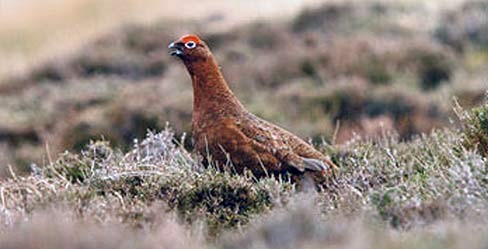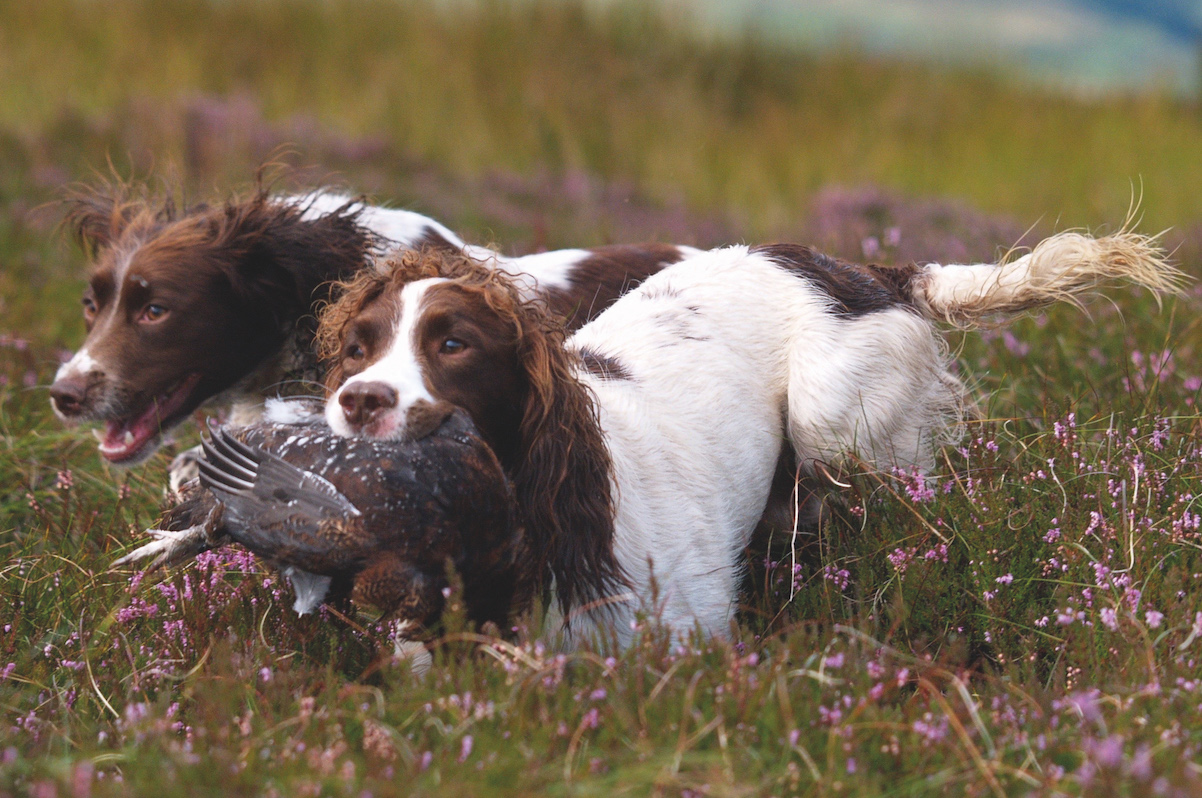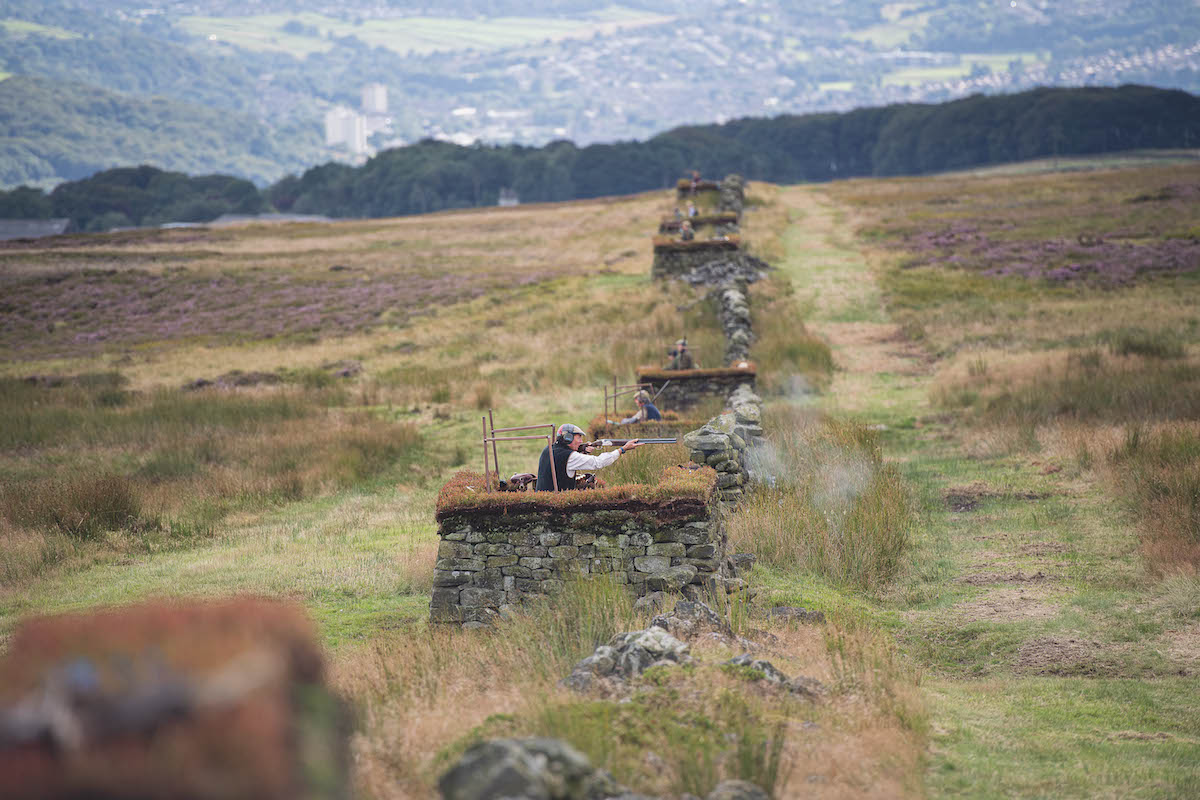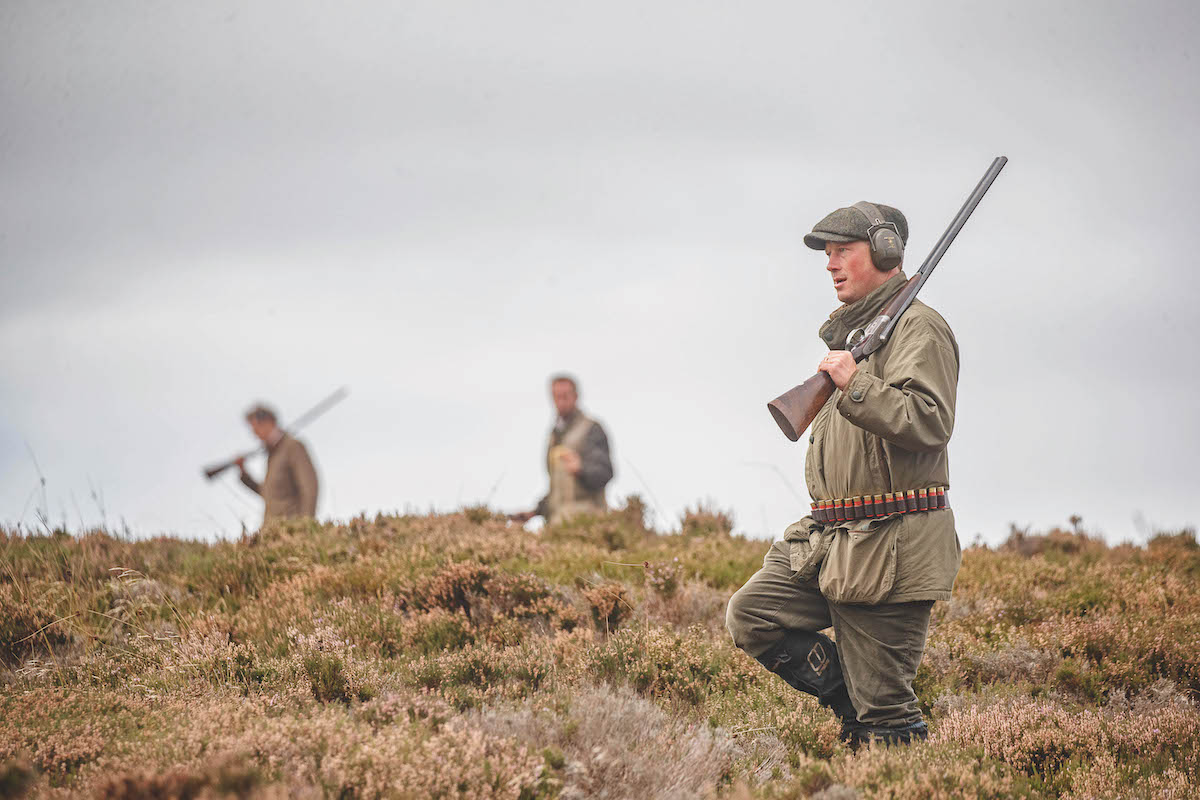Grouse shooting in the Lake District
In 2013, Alistair Balmain joined Newton Rigg College gamekeeping students for their first day of grouse shooting in the Lake District.

Go back! Go back! Go back!? Hearing the distinctive call ahead was all the Guns needed to put their senses in a heightened state of alert as they went grouse shooting in the Lake District.
For the team picking its way carefully across a landscape of heather and granite on top of the Lake District two weeks ago, there was considerable pressure. Not only was the 19th August the first – and only – day of the season on this 5,000 acres of moorland at Shap, but for all of the Guns, the opportunity to take aim at a red grouse had never previously come their way. To add to the pressure somewhat, the shoot was being conducted under the watchful gaze of the new tenants who officially took control of the moor just a few weeks ago. A day of firsts, then?
If you think of the Lake District’s native flora and fauna, in all probability it is perhaps daffodils or red squirrels rather than red grouse that spring to mind. Certainly there are towering peaks and a number of other moors in Wordsworth’s country, but the land by the notoriously weather-beaten Shap Fell, which rises to more than 1,800ft at Wasdale Pike, is, in grouse terms, an island. The heather-clad slopes familiar to travellers as they climb relentlessly higher and higher on the M6 approaching Penrith, are separated by the Pennines from the heartland of grouse shooting. Although this moor may now be an isolated outpost for grouse, in its heyday it was a sufficient draw for no less a sportsman than His Imperial Majesty Kaiser Wilhelm, who shot here on two occasions in 1895 and 1902.
Grouse shooting at Newton Rigg College
Back in the present, Shap’s proximity to the Northern School of Game & Wildlife and the National Centre for the Uplands at Newton Rigg College, 20 minutes further north, now make it an ideally situated practical resource for the students there, and at other colleges, who are set to benefit from the seven-year management lease signed earlier this year with the moor’s owners, Lonsdale Estates.
Now part of Askham Bryan College in York, for years Newton Rigg has enjoyed a reputation as one of the leading training centres for some of the UK’s top keepers, rangers, foresters and land managers. The unique opportunity to add its own grouse moor to the 2,400 acres of farmland, forestry and mixed woodland in which students already practise their skills was one the college could not pass up.
Perhaps because shooting on the moor has been limited over the past few years due to poor breeding conditions, the first shoot day on the college’s new moor had both a triumphal and experimental feel to it. Malcolm Riding, director of the Northern School of Game & Wildlife had invited the Guns to join him and key members of the Newton Rigg team on a low-key day essentially as an acknowledgment of this new era for the moor.
Grouse shooting with gamekeeping students
Among the six Guns were three of the college’s brightest gamekeeping students, alongside Wes Johnson, the college principal. As the team gathered at the shoot hut by the Shap Blue Quarry in perfect conditions – not too hot, overcast, with a good breeze and only the risk of a passing shower – nobody was expecting Tony Williams, keeper here for the past five years, to raise expectations for a record day. Nevertheless, as he gave his briefing, he was confident we would see birds and that some, if not all, of the Guns would get the chance to shoot their first grouse.
As we bounced along in Land Rovers, across several shaky bridges, to the first gill, Adam Jay, a technician on the staff at Newton Rigg explained how, from an educational perspective, every element of moorland management – including bridge-building, but perhaps more significantly conservation work, heather burning and vermin control – can all be integrated into the curriculum across several disciplines.
As a jack snipe flushed in front of us and we stopped briefly to spot a ring ouzel, the challenge of running this moor on the western fringes of keepered land made the support Tony will receive from the gamekeeping students on a day-to-day basis all the more apparent.
Grouse shooting in the Lake District
With the backdrop of the fells surrounding us for miles, the team fanned out and started working up Howe Gill. Tony’s earlier caution that “the greener it is, the wetter it is” stuck in the mind as the Guns trod intently and cautiously up a slope designed to catch the unwary.
A solid granite base to the moor means it holds a lot of water near the surface and Adam Gledhill, one of the college’s top students who, in just a few days time, will fly to New Zealand where he has secured an enviable position on a gamefarm and shoot at Hawke’s Bay for a year, was the first to find his boot full after discovering a hidden grip.
Minutes after we set off, the first “back, back, back!” alarm calls could be heard in front of us and the tension rose – who would be the first to have a chance at the grouse? The answer came as a shot rang out on the right of the line at whirring wings powering out of the heather. Huw Lloyd, the British Association for Shooting and Conservation’s game and gamekeeping officer, had the combined honour of shooting his first grouse and putting the first ever in the Newton Rigg gamebook.
But it wasn’t the last by any means. Out on the far left of the line with his black Labrador, Maddie, Sam Cole, Newton Rigg’s outgoing student president, flushed several small coveys as we approached the top. Hurtling on the wind past him, the birds proved that their reputation as a challenging quarry is entirely justified. Eight shots rang out from Sam’s gun, but no grouse made its way into the bag. Despite his protestation that he shot two at every bird he saw, there was a certain amount of good-natured ribbing.
“Would you mind going back down with Sam to load for him, Adam?” joked Malcolm as the team paused to take in a view stretching from Scotland in the north, deep down into Lancashire and out over Morecambe Bay to the west.
As the line worked back down the other side of the Howe Gill ridge towards the moor’s hut for a lunch stop, Sam’s colleague, James Sutcliffe, who, after finishing his studies this summer, is now on the hunt for a full-time keepering role with an element of stalking involved ? enjoyed more success when he put two birds in the bag after several coveys flushed in quick succession. With minimum fuss, Tony’s German wirehaired pointed, Eva, and his Labrador, Roma, proved their worth by picking the fallen birds from among wet rushes and a patchwork of heather of various ages.
Heather management
Management of the heather at Shap is one area of potential improvement that currently remains limited. The college is restricted by Natural England to burning, as in previous years.
“We can do a lot to improve the moor physically through management and in terms of putting in improved infrastructure,” explained Malcolm, “but to my mind one of the most important things we could do – instigating a new burning regime – is off limits.” Despite this restriction, the ambition of having a sustainable harvest of grouse on a teaching moor is eminently achievable.
As we took a breather for lunch, another Land Rover arrived at the top of the moorland track and Liz Philip, Askham Bryan’s chief executive, joined the party to check on progress. She outlined the college’s plans to share the moor as a resource as widely as possible.
“We have this fantastic resource year-round and we really hope to run courses with other colleges and organisations from around the country,” she said. “Whether it’s conservation courses, wildlife surveys or gamekeeping work, there are so many opportunities here.”
No doubt the moor will be a huge benefit to many in the future but, in terms of opportunities on the shoot day, by the lunch break, just two Guns had yet to bag their first grouse – Sam Cole and Newton Rigg principal Wes Johnson. The pressure was on as we made for the radio mast above Shap Pink Quarry, on a marginally lower summit than Wasdale Pike at just 1,500ft.
Part one of Tony’s plan was to leave three of the Guns downwind below the ridge the mast sat on and work it back towards them with the remaining Guns, effectively presenting the possibility of driven birds. The plan worked like a charm with Sam connecting with a beautiful bird that came powering at him, retrieved by his own Labrador, Maddie. Immediately he decided it was destined for a trip to the local taxidermist. “He ought to get it stuffed,” laughed Tony. “It’ll cost less than what he’s spent on cartridges.”
That left just one Gun glaringly without a grouse and just one manoeuvre left to do. Tony sent college principal Wes Johnson way ahead of the rest of the line, as we worked the slope back down to where we had left the vehicles. Nearer and nearer we got to the end of the day as we walked back, now in beautiful sunshine. Just moments before we finished the beat and the shoot day, a bird got up on the high left of the line and powered down to present Wes with a perfect driven shot. The relief was palpable.
With five and a half birds in the bag, Tony’s plan had worked to perfection – all the Guns had achieved a first grouse and a new era for Newton Rigg’s moor had been ushered in, in style.








